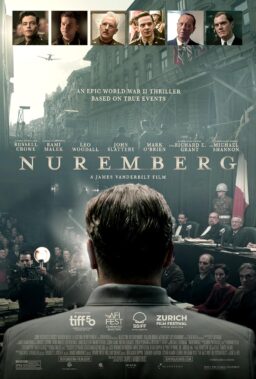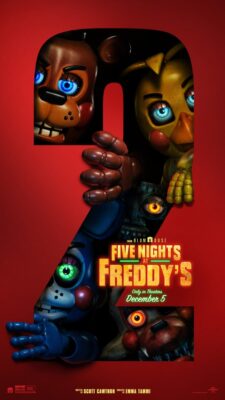What does it feel like to resemble the Phantom of the Opera? You learn to live with it. I’ve never concerned myself overmuch about how I looked. I got a lot of practice at indifference during my years as the Michelin Man.
Yes, years before I acquired my present problems, I was not merely fat, but was universally known as “the fat one,” to distinguish me from “the thin one,” who was Gene Siskel, who was not all that thin, but try telling that to Gene:
“Spoken like the gifted Haystacks Calhoun tribute artist that you are.”
“Haystacks was loved by his fans as a charming country boy,” I observed.
“Six hundred and forty pounds of rompin’ stompin’ charm,” Gene said. “Oh, Rog? Are those two-tone suedes, or did you step in some chicken shit?”

The real Phantom: Lon Chaney in 1925
“You can borrow them whenever you wear your white John Travolta disco suit from ‘Saturday Night Fever,'” I said.
“Yeah, when are you gonna wear it on the show?” asked Buzz the floor director. “Enquiring minds want to know.”
“He wanted to wear it today,” I said, “but it’s still at the tailor shop having the crotch taken in.”
“Ba-ba-ba-boom !” said Buzz.
“Here’s an item that will interest you, Roger,” Gene told me one day, paging through the Sun-Times, his favorite paper, during a lull in the taping of our show. We taped in CBS Chicago’s Studio One, home of the Kennedy-Nixon debate.
“It says here, the Michelin Man has been arrested in a fast food court in Hawaii for attempting to impersonate the Pillsbury Dough Boy.”

“Siskel & Hardy” (Artist: Ori Hofmekler for Penthouse; collection of Roger and Chaz Ebert)
“Yeah,” I said. “I read the paper over breakfast. There was an item in Kup’s Column saying your forehead was named as America’s biggest zip code.”
“Nancy,” said Gene to our makeup artist and emergency crisis counselor, “please bring Mr. Ebert a bookmark so he doesn’t lose his chin again.”
“Oh…my…God!” I said, glancing at a studio monitor. “CNN has just reported that your hairline is receding so rapidly the rising sea level is threatening coastal cities.”
“Ba-boom!,” Buzz said.
Yes, I was fat, but I dealt with it by simply never thinking about it. It is useful, when you are fat, to have a lot of other things to think about. If you obsess about fat, it will not make you any thinner, but it will make you miserable. If you try any diet whatsoever you have read about in a magazine or heard about from a celebrity, it will make you even more miserable. I maintained tip-top mental health during all the years of my obesity. When Chaz dragged me kicking and screaming to the Pritikin Longevity Center, I finally found a way to lose weight, and I lost a lot of weight, and enjoyed it. I kicked and screamed all the way toward anything that might do me any good. It is a proud trait of the American male.

Autumn 1969: Heaven lay about me in my infancy
I didn’t look fat to me. I wore a pullover vest on top of my L. L. Bean Oxford-cloth shirt, and when I glanced down it contained everything in an attractive concavity merging serenely with my khakis, or so I was told. “Phone for you, Rog,” Gene said, handing me his cell. “Your shoes are calling.”
I favored blue sweater-vests, because whenever I wore brown Gene said, “Buzz, the usual offer of 10 silver dollars to any cameraman who doesn’t make Mr. Ebert look like a mudslide.”
“Is the offer limited to close-ups?” Buzz said.
“Twenty coins for any cameraman who can not take a close-up of Mr. Ebert.”
“Don’t worry, Roger,” Buzz said. “I’ll write a note to management about expanding Studio A so the cameras can pull back a little more.”
“Now you’re playing on the same side as Mr. Tact,” I complained.
“That’s why they call me Mr. Thumb Tact,” Gene said.
“I heard you were severely lacerated while trying not to thumbtack a note to your forehead,” I said.
“Ka-boom!”
When I wore a green blazer on St. Patrick’s Day, Gene congratulated me on my Master’s win. For this and other reasons I invariably wore the blue blazer, blue Oxford shirt, blue pullover sweater vest, and khakis. This look was original with me. No other fat man ever thought of it.

May 1987 : Notice the bump on my jaw? Doc Schlichter did.
This is so much fun I almost forgot my subject today. Oh yes, looking like the Phantom of the Opera. There are a lot of Phantom fans who wouldn’t think that was such a terrible thing. Some of them have been waiting in line on the sidewalk outside Her Majesty’s Theater in London for more than 30 years. Indeed, that long-running musical was the inspiration for my only published novel, Behind the Phantom’s Mask.
“The first book in history,” Gene said, “that placed below Amazon’s Sales Ranking.”
“I tried to carry all Gene’s books home from the store,” I told Buzz and Nancy, “but it was too much for me.”
“Why was that, Roger?” Buzz asked.
“Because there weren’t any.”
“Ka-boom!”
There was, I admit, one day in London where I was cruelly made aware of my fat. I was walking through Sir John Soane’s Museum at 13 Lincoln’s Inn Fields for maybe the 20th time. This has been called “the most eccentric house in London.” It was the home of the great 18th century architect, who bequeathed it to a grateful nation. “Now let them dust the bloody man’s collection,” Mrs. Soane said.
Sir John had filled every nook and cranny with an accumulation (you couldn’t call it a collection) of books, furniture, oils, watercolors, drawings, mirrors, statuary,writing implements, rifles, pistols, brass buttons, coins, swords, rugs, etchings, tapestries, stuffed heads and even the Monk’s Tomb, engraved “Alas, poor Fanny!” Here rested Mrs. Soane’s beloved lap dog, which could never remember which marble bases it was not to pee on. Those most certainly included the supports for Soane’s beloved Egyptian sarcophagus, which was especially hard for the servant girls to clean, because they had to lean a ladder up to it and lower themselves inside to sweep up the dust of pharaohs, and dog hairs.

Sir John’s breakfast room: The last hope of mankind
Of Sir John’s breakfast room, Ian Nairn wrote: “If man does not blow himself up, he might in the end act at all times and on all levels with the complete understanding of this room.” I would stand in a corner and try to understand it. Among its features were concave mirrors at the corners of the ceiling, and outside views in parallel windows, one seemingly transparent, the other seemingly a mirror.
In this house is a wondrous art room which the leaflet boasts contains, I don’t know, let’s say 80 paintings, including even the original “Rakes’ Progress” by Hogarth. This room is occupied by a guard with a peculiarly knowing smile. He is sure you will look again at your leaflet and say, “I don’t see 80 paintings.”
The guard: “Quite right, sir! A complaint we often hear from visitors.” Then he pauses and leans forward a little, as if waiting for you to take the bait, which you do, because almost any conceivable question will be the wrong one. The most obvious would be, “You mean there aren’t 80 paintings in this room?”
“There most certainly are, sir!” He could string you along all day, but there would be more visitors waiting to be humiliated. He explains that three walls hang on hinges, and the room actually contains three times as many paintings as are on view.
Faced with this unfolding display one winter afternoon, my eye fell on a handsome 17th century chair, which had a little card behind it on the wall, saying (as no museum chair ever does) “Have a seat on me!” My eyes lit up and I advanced on it, until I felt the guard’s gentle touch.

Pritikin, 2002: Most intimate portrait ever published of a film critic
“Oh, no, no, no, no, no, sir!” he said, paraphrasing the saddest line in all of Shakespeare.
“But it says to have a seat,” I said.
“And so it does. But it’s not for the likes of you!”
I turned away mute from this crushing warning, and wandered lonely as a cloud ‘neath lowering skies in Lincolns’ Inn Fields. A slight mist became a light rain. It was January and chilly. I opened my umbrella, for I love London most when I am strolling at twilight under a slight rain with a big brolly. I began to cheer up, and reflected that dinner hours had commenced at Rules of Covent Garden, the oldest restaurant in London. I always tell the waiter the same thing: “Hello, my good man. For my dinner this fine evening, I fancy the cockaleekie soup, toad in the hole, a banger and mash on the side, and, to follow, the spotted dick.”
Over the years, people almost never discussed my weight, at least to my face. Perhaps they were being tactful. Perhaps they were blind. I preferred to believe they simply did not notice it, as I never did. I avoided reading blogs, where it was deemed sufficient reason to discredit my reviews: “Why should I believe that fat slob about anything?”
There was only one other disturbing incident. This was in Bangkok, Thailand. Chaz and I were visiting Thailand because at a charity auction she had obtained two weeks, two spas and a luxury Bangkok hotel at a shamefully low price. “This was a steal!” she exalted. “These people are all so busy they don’t have time to take off for Thailand.” A true bargain indeed, its value diminished only slightly when we discovered the luxury package did not include air travel.

The Phantom 2004: Merely a fashion accessory.
Bangkok was a shopper’s paradise. Chaz visited a custom tailor’s and ordered four $10,000 designer outfits from the pages of the latest Vogue for $102 each. One day while strolling near our hotel, I saw a more humble tailor shop with a fine white linen summer suit on display in the window. There was a sign: “Fine Linen Summer Suit Made to Measure–$80!”
I went inside. The tailor and his assistant explained the procedure. “We measure you, quick-quick! Then we make suit, hurry to hotel! Then we try on, make alterations-as-needed! Then we hurry deliver suit, your room, 8 p.m.”
“Eighty dollars?” I said. “I thought the Thai currency unit was the Baht.”
“You are only American tourist who think that,” he said.
“But it is 80 dollars?” I persisted.
The tailor looked thoughtful.
“Well…it 80 dollars suit, sure enough. But you–hundred dollar man!”
It was a great deal. For $100, I got a handsome white linen suit that fit me, and a story I could tell every time I wore it.
I keep forgetting about the Phantom of the Opera. Yes, what is it like to resemble him, since I am what is now described as having Facial Differences? To begin with, I must make this clear: Many people have problems much worse than mine, and at a much younger age, and sometimes joined with other disabilities. I may seem tragic to you, but I seem fortunate to myself. Don’t lose any sleep over me.
I cannot speak, eat or drink, and have lost a lot more pounds, and, believe me, it would have been a more fun doing it the Pritikin way. I was pretty far along toward my Pritikin goal when fate suddenly lopped off these pounds and, for my sins, permanently stopped my next Steak ‘ Shake Super Steakburger (“In Sight, It Must Be Right!”) in its tracks on its way from the grill. Compared to other people, I’m lucky. For example, see how much I’m enjoying myself right now.
I am so much a movie lover that I can imagine a certain (very small) pleasure in looking like the Phantom. It is better than looking like the Elephant Man. I would describe my condition as falling about 17% of the way along a graph line between the handsome devil I was at the ripe tender age of 27, and the thing that jumps out of that guy’s intestines in “Alien.”
Self-portrait, 2006, the day before surgery
The problem is that no one seems to know what the real Phantom looks like. I do not look at all like the modern Phantom, as portrayed by the far from unattractive Gerard Butler in Joel Schumacher‘s 2004 film. He’s so handsome, he has the girls blowing kisses to him as he punts along the sewers. No, the Phantom I resemble, the real Phantom, is the one played by Lon Chaney in Rupert Julien’s classic 1925 version.
The 2004 Phantom scarcely skulks about in a clammy subterranean grotto. He seems to inhabit a spacious dockside room in a sewer marina. Nor is his disfigurement other than picturesque. The way his sleek off-white mask covers his right temple, eye and upper cheek, and curves gently to meet his nose, it looks like a fashion accessory. Everybody will want one. It also distracts from the inescapable fact that the Phantom’s wound has been relocated.
Yes, in the 1925 version, the Phantom wears a full face mask. When Christine Daae removes it, there is one of the great smash cuts in cinema, showing the Phantom full-face with his mouth gaping open. Although his complexion is far from untroubled, his real problems involve his mouth, teeth and jaw–nothing to do with his right temple. Study the picture at the top of this page.

Self-portrait, 2008: After the ball is over
I know, I know, don’t tell me: Using the 1925 mask, the Phantom could hardly sing in a satisfactory musical. How could one be sure if that was even really Gerard Butler singing? Another of the many reasons silent films are preferable to these noisy modern ones when actors are always opening their mouths. Both the wound and the mask were relocated by Andrew Lloyd Webber. Now the Phantom is clean-cut, square-jawed, has obviously had some Work done, and looks like a toothpaste model or the cover illustration of a romance novel.
I resemble the Phantom, but only to myself. I wear a bandage wrapping the general area of the Phantom’s 1925 troubles, although good doctor David Reisberg and his colleague David Rotter of the University of Illinois at Chicago Hospital have just given me a test run of a handsome new prosthetic that will allow me to retire the Mummy look, and then Bob’s your uncle.
So to return to my opening question, what does it feel like to resemble The Phantom of the Opera? Not like much of anything. I rather avoid mirrors. I do not dwell on my appearance. I have bigger fish to fry. Nor do I mope about fearing that my cancer might return. If it does, it does, and that’s what she wrote. At Pritikin they have a truism: “If you don’t die of anything else, sooner or later you will die of cancer.” We all nod thoughtfully.
If this news depresses you, reflect that for “cancer” you can substitute almost any other fatal disease or even any accident, save perhaps Spontaneous Combustion, which I do not believe in, but have always thought an entertaining way to go. If that happens, they’ll be talking about you when you’re gone.
“Do I look okay, Gene?” I asked him one night when we were waiting backstage to go on the Leno show.
“Roger, when I need to amuse myself,” he said, “I stroll down the sidewalk reflecting that every person I pass thought they looked just great when they walked out of their house this morning.”
“The Phantom of the Opera” is in my Great Movies Collection. For a virtual tour of Sir John’s, http://www.britishtours.com/360/soane-museum.html
The Wonderful Ice Cream Suit, Summer 2005. (l-r) Tony Danza, Werner Herzog, Richard Roeper, Roger Ebert, Haskell Wexler, Joe Mantegna, Virginia Madsen, Scott Wilson.
Siskel & Ebert at McDonald’s
The worst of times, the best of times
Siskel & Ebert on Howard Stern’s TV show













